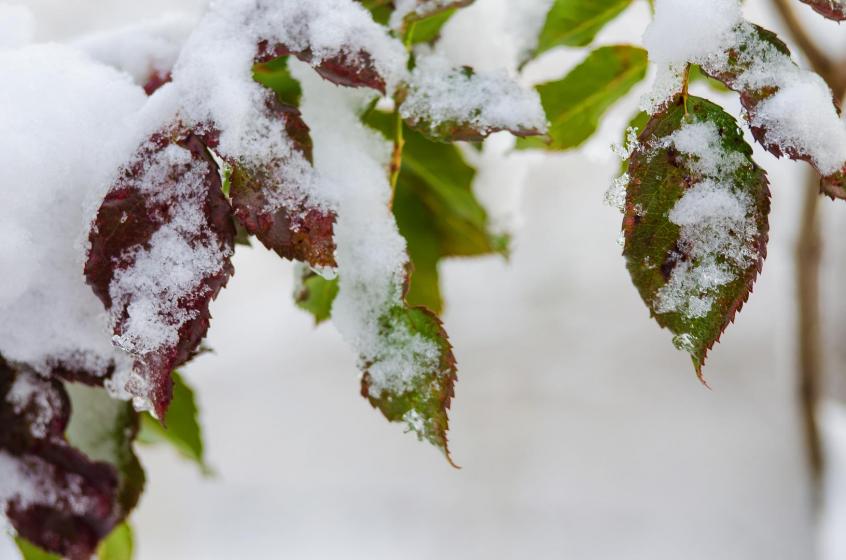Written by McDonald Garden Center CEO, Eddie Anderson
After a mild prolonged fall season our plants and gardens are having to endure a severe cold shock. Plants develop their cold hardiness slowly in the fall and beginning of winter. The further into winter we go the more cold hardiness plants develop. Most likely our gardens are more vulnerable than usual this year.
Broad leaf evergreens are the most susceptible to damage during this period. The above ground leaves and stems are frozen during the nights. The high winds pull the moisture from the foliage even when frozen. During the bright sunny days the foliage thaws and creates even more demand for water. The top few inches of soil remain frozen and the roots cannot take up water. This leads to the complete dehydration and death of the leaves. In weather like we are having now it is there is also the possibility that the bark of evergreens like azaleas, camellias and hollies will split and cause death of the plant. Fortunately we have a good snow cover that is a nice blanket of insulation that will protect most perennials and smaller plants. The most vulnerable plants are those in above ground containers. Most plants die when the root temperature reaches 15 degrees. When planted in the garden roots are much more protected because three feet down the earth is a toasty warm 57 degrees. This underground warmth continues to keep the soil temperature from dropping much below 30 degrees. The snow cover then helps retain this warming effect.
As we clear our walks and driveways do not use ice melting materials in areas where the run off will settle around the leaves and roots of plants. This may cause burning and death of garden plantings.
What to expect:
As we thaw out the plants will begin to show signs of damage. This process will take until June to play out. Even then be aware that plants may be in a weakened condition and susceptible to other problems. Plants that loose there leaves may be much slower to leaf out in the spring. Be patient. Allow more time for the plants to recover. If you are uncertain, check to see if the plant is still alive. Simply take your thumb nail and scratch the bark. If you find green tissue under the surface the plant is still alive. If the tissue is brown it is dead at the point you checked but may be alive in the roots or lower stem. Go ahead and remove any dead stems you find as they still act as a wick to continue to pull moisture from the plant. Broad leaf evergreens will give you additional clues as to their condition. If the leave loose their color begin to curl downward that section of the plant is probably dead. Give the stems the scratch test to find green tissue. Also look for splitting of the bark, another sign of death of that section of the plant. Remove these sections. In the freezes of the late 1970s and early 80’s we observed large, established hedges of ligustrum killed to the ground. The ones that were cut to the ground were back up to full size in 3 years. The extensive root system produced very vigorous new growth. Figs are a plant that is particularly vulnerable. Even big old growth may be killed to the ground. Just cut the dead wood away and be patient. You will be eating figs again in 2-3 years.
While in this weakened state plants do not have a demand for fertilizer. As much as we would like to help as they struggle to recover please resist the temptation to apply fertilizer until you have some vigorous new shoots to utilize it. Fertilizing too soon may cause more damage to the weakened root system. Be patient. When in doubt wait. Mother Nature has amazing power to regenerate her self.
Roots do not have a big demand for water. Only water if we are in a period of extended drought.

